-
Posts
202 -
Joined
-
Last visited
Content Type
Profiles
Forums
Events
Posts posted by peter1127
-
-
nice! No leaking or smoking and running is a good start! (assuming there is actually oil in the engine
 )
)
Did the same with the laptop, only ducttape because straps allowed too much movement at speed
-
 1
1
-
-
On 5/23/2024 at 1:12 PM, Joseph said:
I have planned more cooling capacity, and while i'm plumbing everything to get it up and running I'm thinking i could maybe fit a (small) oil cooler to the turbo drain line to add a bit of cooling to a hot line of the system ?
Although i'd like a mechanical scavenge pump, for the time being i'm just going to use the classic Facet, maybe cooling the oil before it going through the pump would be good too
Oil cooler on the oil return is a bad idea. Apart from space constraints, any restriction will result in smoking. You could theoretically place it after the catch tank, but the amount of energy you will cool down this way is minor anyway: hardly any flow. Better to use an as large as possible aftermarket cooler and use quality oil which is replaced frequently. Thought while typing: you could add cooling ribs on the catch tank. Doesnt hurt but again flow is minimal so improvement is probably not noticeable.
I never used a facet pump, what I read is that for some people it works fine, some have them fail frequently. Maybe there are chinesium variants around? I use a crank driven mechanical pump, works nicely and not that expensive. For me its worth the money that such a key component is reliable. When scavenging, dont forget a breather above engine oil level on a catch tank to avoid vacuum.
-
 1
1
-
-
sensors on the runners will die immediately. Did that a long time ago just before turbo: doesnt work. On the dumppipe the reading will likely be off because its too close to outside air. Seems to me WOT would be ok because of the massive airflow, but idle and cruising will be off. No experience myself, just parrotting what other say. Longer pipe without muffler could be a good option for testing.
-
1 minute ago, Gixer1460 said:
Wouldn't that give a lean miss? The pitot should always be a better choice as it acts faster to pressure change - that's its whole reason! I've no axe to grind here - carbs are hard enough without having to contend with pressurised air AND fuel . . . . . . . I prefer EFI!
As long as pressure is high enough to fill the bowl its ok. tis not like efi where fuel pressure directly influences amount of fuel injected. In baron's case maybe the spot on the plenum was unlucky so he has pulsing problems. I did it before, worked fine. Converted to efi as well and like it a lot, although I have to say it also has its challenges.
-
2 hours ago, Baron said:
I had FPU pressure take-off from plenum when I first build this bike (a couple of years back) and it didn't work. I think there is too much pulsing, because it dropped fuel pressure and caused high idling. I fixed it by taking pressure from pitot.
@Fredrik_Steenhow did you make adjustable pitot?
Weird I didnt have that. Anyway you could make a separate pitot for fpu. Best that nothing interferes with the carbs dynamic pressure.
-
Just take the pressure to the fpu from the plenum. Doesn’t need dynamic boost.
@Fredrik_SteenIdea of adjustable pitot makes a lot of sense! -
My carb setup did work nicely (in the end:-) I had 2 pitot tubes, one for each set of carbs. No tee's in there or other stuff connected to it, just straight from pitot to carbs as short as possible, and equal length and definately no kinks! I made my pitot tube straight and made an angled hole in the uppipe as to avoid the bend in the pitot tube. The entry should be in the middle of the airstream, I did angle cut it. I used ID 6mm tubes into a 48ID uppipe. Dont know how much of a difference that makes compared to your design but I noticed a difference between one and two pitot tubes.
At WOT and boost, slide is/should be fully up so needle height, idle screws and pilot jets dont influence AFR (much) My setup was ok with all boost settings at 125mains
Check out a post that I wrote a looong time ago about this topic, maybe it helps https://oldskoolsuzuki.info/archives/396
Sometimes the FPU is set too low causing high boost lean AFR. If I remember correctly I did set it to 3psi.
-
ok, it looks quite good in the lower rev area so I thought maybe original cr
-
compression ratio
-
nice! Even stock CR?
-
On 4/12/2024 at 6:17 PM, Gixer1460 said:
Waste of time and due to proximity to cyl. head or upstream of turbo (depending on style chosen) would likely fail in short order! A single sensor after turbo is usual placement but be warned if running a shortie dump pipe the sensor can be confused with atmospheric oxygen due to sensor being close to exhaust exit! Try not to fit before turbo as pressure and elevated temps not good for them!
Tried that before. Failed within 5 min.
-
I would say blow trough is the better solution, draw trough has some advantages but for the street it has too many disadvantages, driveability being the main one.
draw trough con
- hot turbo under the tank: vapor lock
- exhaust close to your leg
- Longer exhaust pipes so more lag
- One large carb
- Hard to add an intercooler
- Turbo seals needs to be able to deal with the fuel
- Turbo needs to be able to deal with vacuum
- Fuel can be unevently divided between cylinders: 1&4 tend to be leaner, or difference between 1-2 & 3-4. Sometimes a divider is added to counter that (Iguess you could add 4 injectors in the plenum and have the carb replaced by a large throttle body)
-
If the engine backfires you back is literary on fire
 because mixture is in the whole intake area (compressor housing, and plenum)
because mixture is in the whole intake area (compressor housing, and plenum)
- Very violent on/off performance especially on large turbo big power bikes
- Difficult to add a muffler
draw trough pro
- easier to set up the one carb, because there is no pressurisation of the carb and its very easily accessible
- No FPU needed
- No pressurized carb needed
- Gravity drain of the oil is easy
- Front wheel clearance is not a problem
-
Very violent on/off performance especially on large turbo big power bikes

-
looks really oldskool and cool and imo the only good reason to do it

Blow trough con
- Setting up the carbs can be difficult (could be mitigated by adding injection but that also has its challenges)
- Carb sealing can be a challenge, fuel pressure is critically important to stay in that sweetspot between leaking and fuel starvation and so is float and needle/seat condition. (Again could be mitigated by adding injection but that also has its challenges)
- Front wheel clearance especially on larger turbo's. I bought header and turbo at proboost and that fits nicely. Still need to experience emergency braking front wheel clearance........
- oil return need most of the time a pump. Can be electrical or mechanically. You could try gravity drain but if turbo sits low it can smoke like a mf
Blow trough pro
- Off boost behaviour is much nicer, depending on CR it can be close to stock so suitable for the road
- Intercooler is possible
- No special seals for fuel and/or vacuum are needed
- Easy to add a full exhaust
- No issue with AFR being different per cylinder (unless fuel injection, then that could happen with poor plenum design)
- Even without intercooler intake air is cooler so more detonation resistant = more boost = more power
-
 6
6
-
Many turbo's come with a boost reference connection on the compressor housing. I also take the boost from the compressor housing, it being the shortest way to the boost controller which in turn sits close to the wastegate. I have no overshoot or oscillation, and the advertised 6psi spring results in 6psi measured in the manifold. (of course check if its true for your wastegate) It seems to me that control is better in shorter lines and no large volume such as a plenum that can cause delays. Since many people use the plenum for connection to the wastegate with good results, I guess in real life it not a big problem.
Another consideration when using the compressor connection: the hose is short and simple to route, so chance on it getting pinched somewhere under the fuel tank is much smaller. If the hose is off/closed the wastegate doesnt open, not fun.
-
 1
1
-
-
Manual states and I quote: "DO NOT Mount the wastegate so that the actuator is less than 100mm from a heat source."
I'm kinda new to this, isnt this normally close to a turbine housing and headers?

-
On 3/31/2024 at 10:06 PM, Breadman said:
Despite my efforts of trying to tune the bike, I noticed that the spark plug on Number 4 cylinder..........as you are sitting on the bike..........seemed to be a bit leaner than the other spark plugs.
I swapped the plugs and coil packs around but the problem was the same.
The Suzuki fuel injection system is mounted upside down from its normal GSXR600 orientation so the injectors are on top.
Fuel was entering from the left hand side of the bike and then exiting out of the original fitting, between 3 and 4 cylinders. This fitting was actually the original Suzuki INLET . I have circled this in the photo.
In and out at the end of the rail seems a better solution to me, so basically as your picture but at both ends.
-
 1
1
-
-
If there is boost creap, be careful. Boost could get higher then intended. I assume you have an inernal wastegate with actuator. If you tighten that wastegate to get higher boost, it also cant open much resulting in boost creap. For higher boost, better use an actuator with stronger spring, or a boost controller.
-
Yeah dynamic compression is a result of many factors of which you stated some. So what is true for one unique setup doesn’t need to be for another, let alone different engines. That is why it’s so useful to get data from people with the same engine and a similar setup.
-
21 minutes ago, Reinhoud said:
Not much experience;
What I noticed, the sort of turbo, as in, how fast it spools up, determines a lot if you get detonation or not.
AFAIK, there are a few guys here who have EFI who have no problems with detonation.
In hindside, I'm not sure that they don't have problems with detonation because of the EFI, or the sort of turbo..
I don’t think the speed in which it spools up results in problems. Afaik detonation when turbocharged occurs around peak torque, or at prolonged high rpm when everything gets ff hot. Both have nothing to do with spooling up.
I can imagine a poorly chosen turbo heats up air more which doesn’t help.efi and carbs both are fine as long as afr is correct. You can run into fuel starvation with carbs when you turn down the pressure too much to prevent flooding. Then again there are multiple ways to f up efi too :-)
-
5 hours ago, Blower1 said:
Old boost calculation formula: (boost (bar) x compression ratio) + compression ratio = 16 or less is safe.
Above 16 needs intercooler and/or lower compression ratio.According to this 15psi at 9:1 is not safe (18) and maximum cr for 15psi is 8:1. Sounds conservative but indeed it’s safe.
-
1 hour ago, Fredrik_Steen said:
What do you think was the root cause for the failed ringlands?
detonation due to overdoing it
-
Had 13.5:1 1277 wiseco’s, still thought it was too slow and went the turbo route. Didn’t want to buy new pistons so did machine them to approx 10:1 and thought this would be ok up to 10psi. I turned it up a bit more past 15psi and that did held up for a little while until all 4 pistons gave up during a flier. Ringlands broken and it smoked like a mf. Bottom end was fine, head not so much and of course barrels and pistons were gone. Detonation due to too much boost for this setup. Did fix it with new again modified wisecos and thicker spacer plate at 8.5:1 and drove that for years without problems with 15 psi.
Past and now I run 98 octane pump fuel , stock plugs, no intercooler, stock cams at stock timing, 4 degrees ignition retard and a proper oil cooler. Before I had a td04-16t and now a td05h-16g
It’s hard to compare setups, but I think that 15 psi on stock cr is pushing it. -
17 hours ago, Fredrik_Steen said:
I vote for leve them as they are and send it. If you have the ability lower the ignition 1-2 degrees at peak torque.
On the dyno that probably will be ok. On flyers it’s not. Been there repaired that.

-
20 hours ago, Arttu said:
9:1 compression for 15psi on pump gasoline sounds pretty much right. I had earlier 9.5:1 compression up to 18psi or so. Although I had water injection for charge cooling but I tested it also without water injection and didn't notice any problems.
Your plan for piston dish looks exactly like what I did on my current JE pistons. I think the button in the middle shouldn't hurt combustion chamber efficiency in any way. If I recall correclty the crown in the middle was only 4.5mm thick. It has been fine but I wouldn't like to try any thinner. Ideally you would like to make the dish the same shape than the combustion chamber but that's difficult to make without CNC milling...
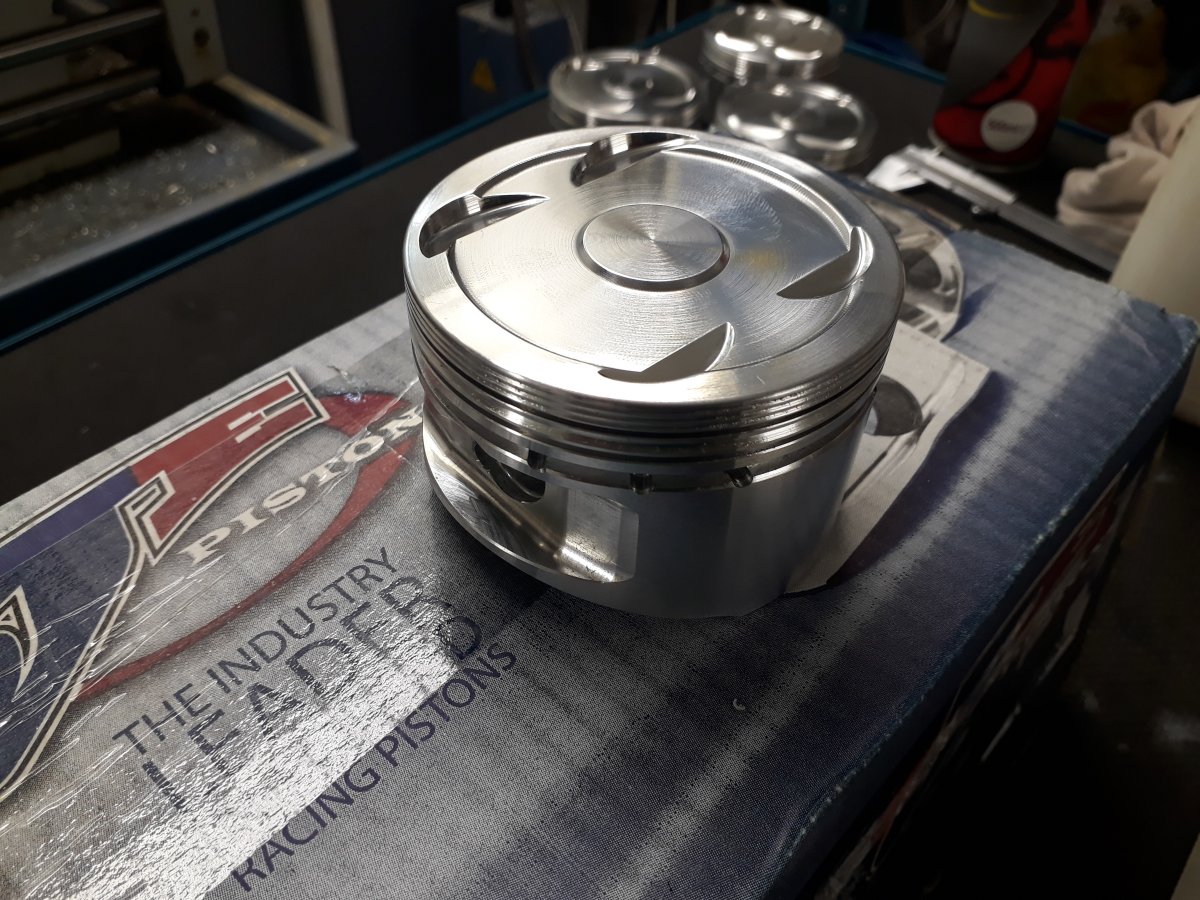
good info thanks!
-
Got the MTC 81mm 10:1 pistons. They are much beefier around the wristpin area. They are now boring and honing the cylinder block. Before I mentiioned I want the CR to be 8:1 - 8.5:1. Reading a bit more in various places I think its a bit too low for a road bike. 9:1 should give faster spoolup and better low end while it should enable 15psi on 98 octane resulting in around 270hp. (input welcome)
Played in CAD with the pistons to see what could be done to lower the CR while maintaining squish. Around 4cc should be cut from the piston to achieve 9:1. Thing is, in the middle of the piston is a relatively thin area of 5mm which I think I should leave alone. A bit surprised that turbo/nitrous pistons have a thin area in the middle. Maybe because they mainly make high compression pistons from this casting? The rest of the piston is 9mm so I could reduce that by milling out a ring 1.5mm deep. Of course I'm first going to verify deck height and actual compression volume before ruining new pistons

Does that make sense, or does that f@ck up combustion in such way that it would be better to add a spacerplate and accept the larger squish?
unmodified MTC 81mm
Unmodified MTC 81mm
Bottom of MTC piston
Modified MTC
Modified 81mm MTC
Modified 81mm MTC thickness check


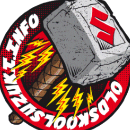
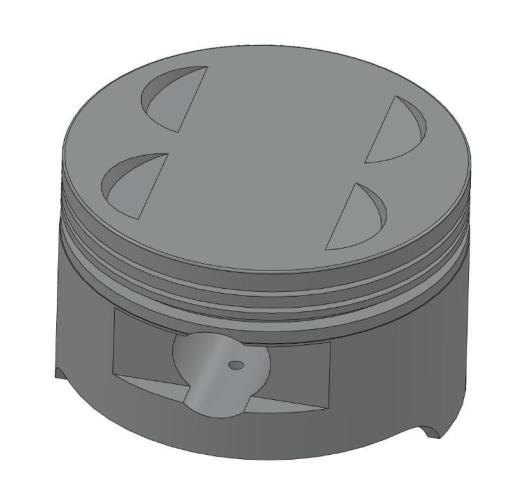
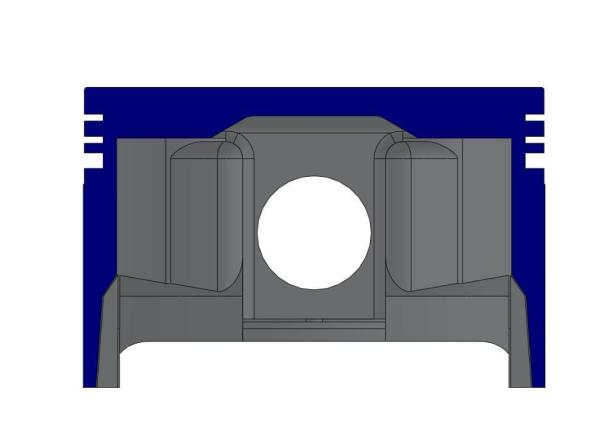
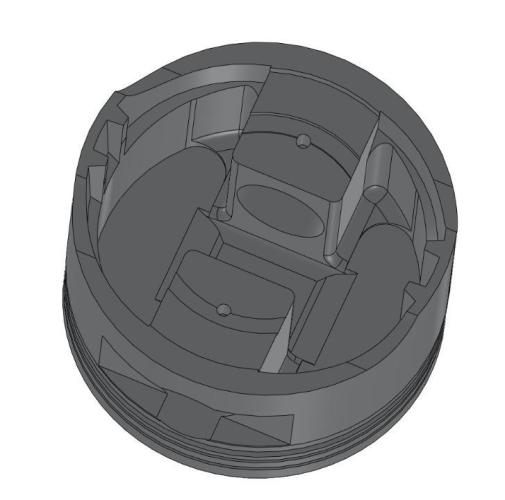
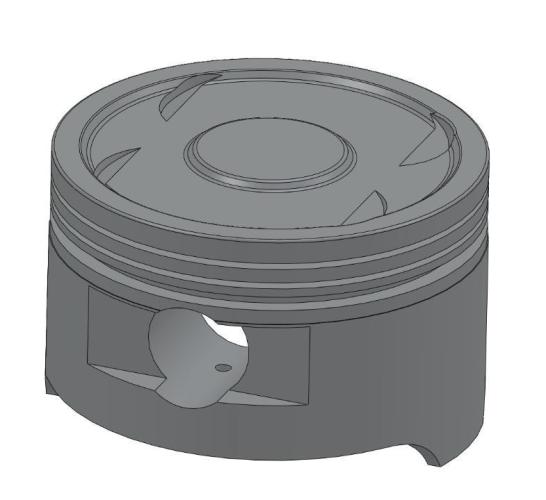
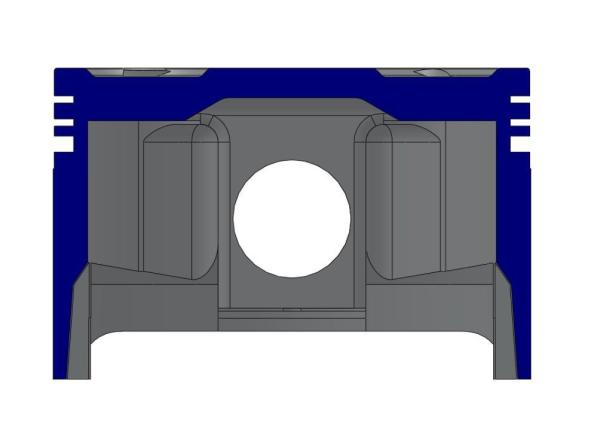
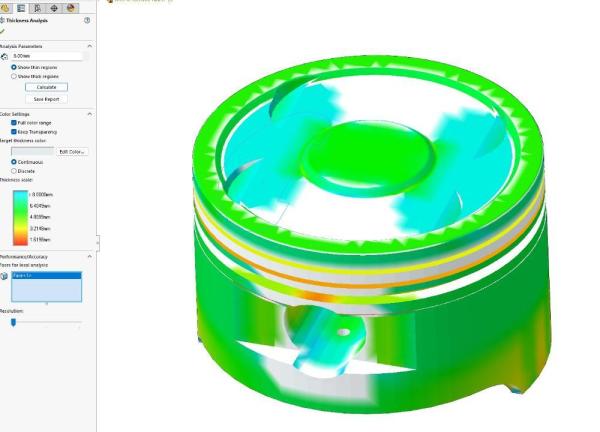
Turbo return catchtank size
in Forced Induction
Posted · Edited by peter1127
I have a aTD05-16G without restrictor, and the it drainsinto the top of the catch tank. In your case it enters at the bottom with a bend which has some restriction. Tbh it looks like it should work but still it has a little bit more resistance then draining completely free.
Also I dont see a breather?